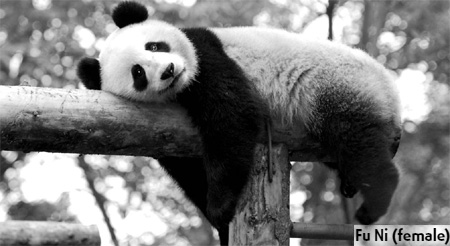Panda diplomacy helps repair rift
The latest sign of a thaw in tension between China and Australia was not an agreement reached at the bargaining table or a handshake between politicians but some much cuter diplomacy.

China has agreed to send a pair of giant pandas to South Australia's Adelaide Zoo.
The couple will call the zoo home for the next decade.
The two giant pandas, Wang Wang and Fu Ni, were put into quarantine on Oct 21 in the Bifengxia base at the Wolong Nature Reserve in Ya'an, Sichuan province. When they emerge from their segregation, they will be ready to travel to Australia, said Li Desheng, deputy chief of the Wolong Nature Reserve, on Friday.
Li has recently returned from a visit to Adelaide Zoo.
He said the bears could begin their life there very soon, although the exact date is yet to be fixed by the State Forestry Administration.
The news follows recent heightened tension between Beijing and Canberra over alleged Australian government restrictions on Chinese investment in mining. On top of that, ties were further strained when an Australian mining executive was arrested in China. Beijing also recently criticized Canberra's decision to grant an entry permit to Rebiya Kadeer, who it believes was behind the July 5 riot in Urumqi, in Northwest China's Xinjiang Uygur autonomous region, that claimed 197 lives.

Li said construction of the panda exhibit at Adelaide Zoo is complete and will be officially opened on Dec 13.
Australian governor-general Quentin Bryce will open the new facility along with Zhang Junsai, China's ambassador to Australia.
Adelaide Zoo has dispatched a special team of experts to work with the Chinese experts at the Bifengxia base to study the pandas in their natural environment.
China agreed to send two giant pandas to Australia in September 2007 at a meeting between President Hu Jintao and Prime Minister John Howard at that time before an Asia-Pacific summit.
The male panda, Wang Wang, was born on Aug 31, 2005, while the female, Fu Ni, was born on Aug 23, 2006.
They will spend 10 years at the zoo as part of a breeding program aimed at ensuring the survival of the endangered bears. Both pandas were bred in captivity at the Wolong Nature Reserve in Wenchuan county, Sichuan. After the May 12, 2008, earthquake destroyed the panda enclosures in Wolong, they were sent to its Bifengxia base.
President Hu Jintao said the pandas represent friendship between the countries.
"I would like to stress that this is the first time that a pair of Chinese giant pandas have ever settled in Australia and, to be more specific, in the Southern Hemisphere," he said.
Former Prime Minister John Howard said Australia welcomes the gesture from China.
"It's important, when you're talking about billions of dollars of resource contracts and you're talking about tens of thousands of students, it's also important to find in the relationship, the warmth and exhilaration that can come from the temporary residence of such lovely creatures," he said.
Adelaide Zoo is also hoping the pandas will be a major tourist attraction.
The zoo's director of conservation programs, Kevin Evans, said they will likely be a huge draw.
"We feel that people will come from New Zealand and interstate to see pandas as they do internationally," Evans said. "People will travel vast distances to see giant pandas because they are so interesting and have been the flagship for conservation for over 30 years."
The giant panda is one of the world's rarest animals. There are only about 1,590 in the wild in China, mostly in the southwest. Another 210 have been bred in captivity.
China has been raising pandas through artificial insemination and breeding programs for nearly 50 years. It set up a loan system in 1984 under which foreign zoos can house pairs of bears in the captive breeding program.
 0
0 






